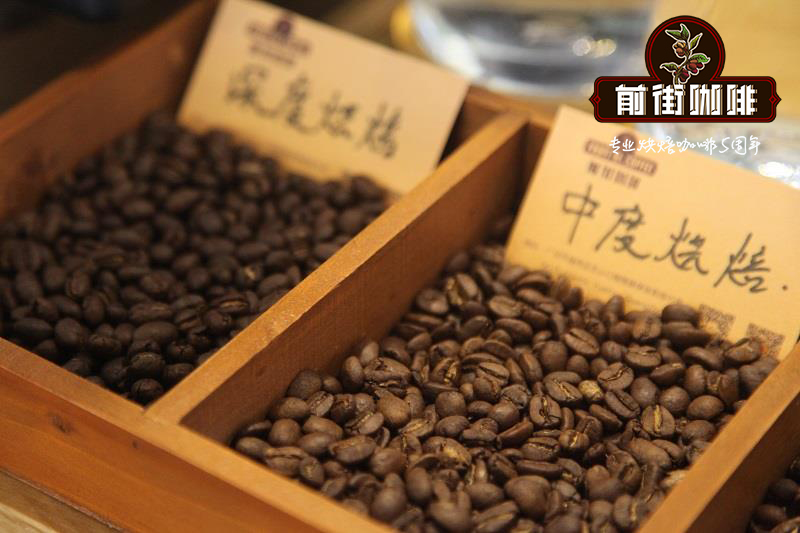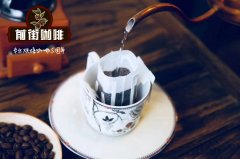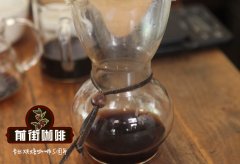Do you have Arabica coffee in Laos? what are the flavor characteristics of coffee in the Bravin plateau region of Laos?

Harvest season: 2019 Universe 20
Treatment method: anaerobic solarization treatment
Qualification Certification: rainforest Alliance
Variety: iron pickup
Coffee grade: Laos CA NAT PR G1
Flavor: black cherry, olive, sweet and delicious, high strength
Laos is a small country between Thailand, Vietnam, China, Myanmar and Cambodia. At the beginning of the 20th century, French colonists introduced coffee to Laos. Today, the production center of Lao coffee is located in the Boravan Plateau in southern Laos, about 9 to 1350 meters above sea level, and currently has about 20000 tons of Arabica coffee and 10000 tons of robustas coffee. As environmental conditions are conducive to the production of specialty coffee, Oran has grown 1300 hectares of coffee on its own estate in the heart of the Braven plateau and plans to expand it to 2000 hectares. Laos Real Estate has developed different farms to extract high-strength, full-bodied real estate coffee from coffee brands with unique and excellent flavor through a variety of well-designed processing steps. All properties are certified by Rainforest Alliance and UTZ.
In the southwest corner of Laos, the Mekong River is like an ocean close to the border of Cambodia, fan-shaped into many triangular fingers, so the area is called the four Thousand Island Si Phan Don. A hundred miles north, after embracing the border with Thailand for 500 miles, the Mekong River (named after Mekong, the mother of the Wanhe River) breaks the border between the two countries, where it meets the smaller Xe Don River. Occupies the city of Paske, capital of Barcelona. This extension of the Mekong River marks the western and southwestern corners of the coffee producing areas of Champasak, Bolaven Plateau and Laos.
If it were reshaped into a rectangle, Laos would be a little smaller than Oregon; but in the 92000-square-mile collection, there are 160 ethnic subgroups and 82 different living languages (the number does vary). Oregon has 160 cities with a population of more than 1000. Imagine that each of these cities has its own discrete race, and they speak 82 different languages together in addition to English. Laos exists administratively, politically and geographically. But functionally, Laos is a collection of different communities in terms of people living on land and on land.
For example, in the first century in 20 years, the Yahern (also: Nyaheun) came from the Annan Mountains, which defined the eastern edge of the Brawan Plateau and came down on the border with Vietnam, and found that some of their citizens occupied the Kingdom of Barcelona, which is now the "coffee capital" of the Paksong region and Laos. The royal family granted them land and cultivated it for 120 years, including coffee, which was introduced to northern Laos by the French in 1915. Coffee production moved to the plateau and the plateau with a suitable climate in the 1920s. Today, the villages of Farm Corridor, Lhasa Sein and Xenamnoi have become part of a network of seven villages in Xekatham Estate, from which Olam has chosen the best coffee grown in the area.
Until the 1970s, Yahern,Talieng,Alak,Lawae,La Ngae,Katoo,Laven and other people practiced rotational farming, allowing land to be restored and cultivated in new areas. Unfortunately, this usually means "cutting down and burning", destroying forests to create fresh agricultural land. In 1977, the government began to encourage settled agriculture through a combination of livelihoods and cash crops, including coffee. It took a generation, but farmers on the plateau adapted to permanent agriculture. Traditional farming methods have not completely disappeared, but most of the "logging and burning" has been replaced by commercial cultivation such as teak and rosewood, and forests are used as commercial products, such as bark for incense and reeds for making brooms. Over the past two decades, the government has promoted the transition from Robusta
Under Phaya Naga's supervision, Yahern is just one example of many coffee-growing communities in Laos. Since indigenous communities tend to maintain cultural rather than economic independence in rural areas, standardized agronomic methods can be a challenge. Even for relatively new crops such as coffee, communities develop their own ideas and methods to respond not only to farming, but also to the social impact of expanding permanent agriculture. Over the past decade, high-quality coffee on the Bolaven plateau has meant not only a shift from Robusta to Arabica, but also more. With the passage of the season, more and more farmers learn about agronomy and milling practices, which can produce quality products worthy of professional market use.
Important Notice :
前街咖啡 FrontStreet Coffee has moved to new addredd:
FrontStreet Coffee Address: 315,Donghua East Road,GuangZhou
Tel:020 38364473
- Prev

Coffee characteristics of South Minas Valley Farm in Brazil will the fruit tone of yellow bourbon be better than that of bourbon?
Country: Brazil: Sul de minas altitude: about 1350m handling: sun varieties: Yellow Bourbon Certification: UTZ Certification Award: best Coffee Award in the Sao Paulo State Seventh Special Coffee Competition the Fifth ABIC National Coffee Competition Champion and Vice Champion Brazilian Coffee Association (BSCA) 9th specialty coffee competition flavor description: sweet maltose
- Next

Which producing area in Ecuador has the best coffee? how is the bourbon flavor of the Victorian Manor?
Origin: Ecuador Ecuador production area: Nanegal Farm: La Victoria de Quito Victoria Manor producer: Guillermo Qrtiz altitude: 1500m~1550m production season: 2019 / 2020 Variety: Bourbon bourbon Bean treatment: Washed washing baking degree: shallow flavor: flower fragrance, orange, peach, honey, fruit juice manor introduction
Related
- Detailed explanation of Jadeite planting Land in Panamanian Jadeite Manor introduction to the grading system of Jadeite competitive bidding, Red bid, Green bid and Rose Summer
- Story of Coffee planting in Brenka region of Costa Rica Stonehenge Manor anaerobic heavy honey treatment of flavor mouth
- What's on the barrel of Blue Mountain Coffee beans?
- Can American coffee also pull flowers? How to use hot American style to pull out a good-looking pattern?
- Can you make a cold extract with coffee beans? What is the right proportion for cold-extracted coffee formula?
- Indonesian PWN Gold Mandrine Coffee Origin Features Flavor How to Chong? Mandolin coffee is American.
- A brief introduction to the flavor characteristics of Brazilian yellow bourbon coffee beans
- What is the effect of different water quality on the flavor of cold-extracted coffee? What kind of water is best for brewing coffee?
- Why do you think of Rose Summer whenever you mention Panamanian coffee?
- Introduction to the characteristics of authentic blue mountain coffee bean producing areas? What is the CIB Coffee Authority in Jamaica?

